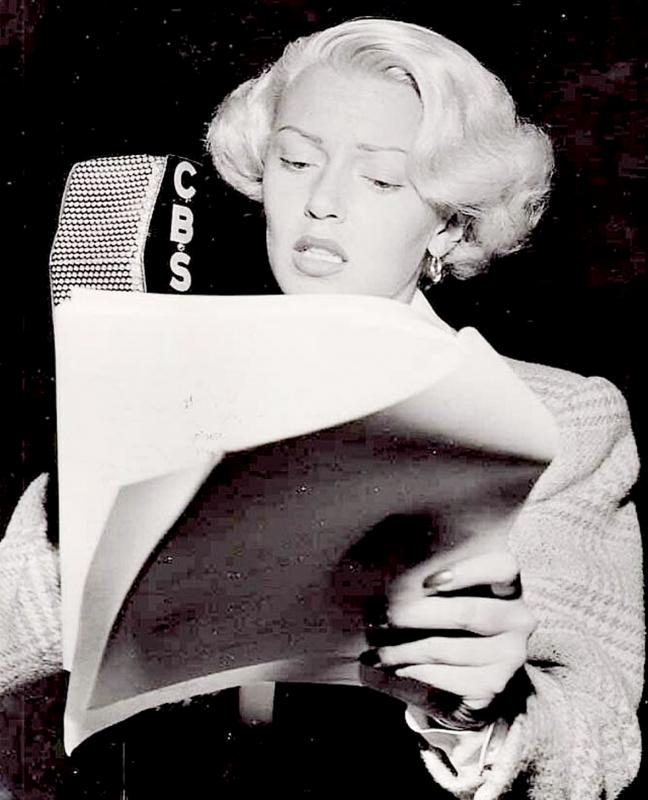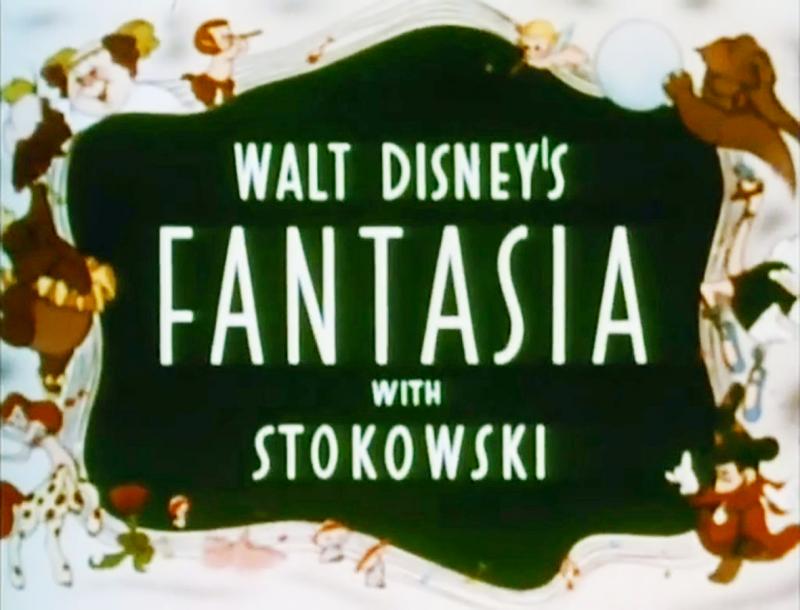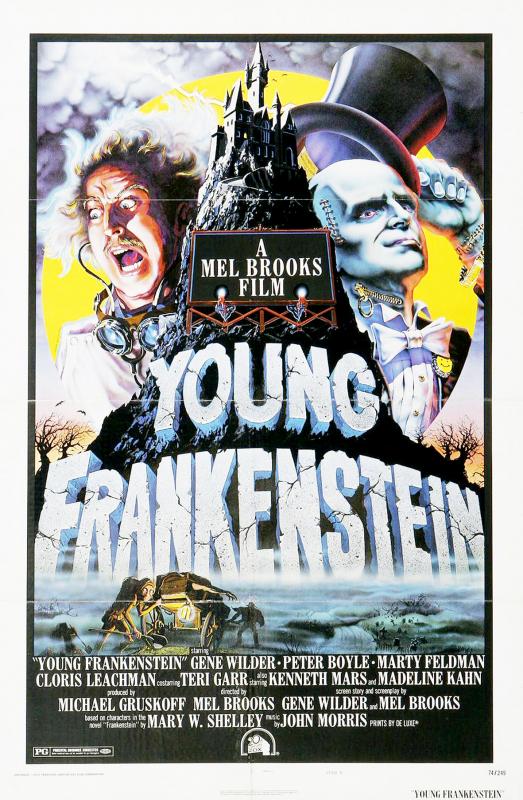There’s surely only one thing that unites Russian composer Igor Stravinsky’s Rite of Spring, the 1974 comedy horror Young Frankenstein and The Muppets’ most recent special on Disney+.
Regrettably, it is not Kermit the Frog. The thing that appears in all of these works has no easily recognizable familiar name, although it is perhaps one of the most recognizable three-beat musical phrases in history. It starts with a dun; it continues with a dun; it ends with a duuun!
On screen, a dramatic “dun, dun duuun” has appeared in everything from Disney’s Fantasia to The Fresh Prince of Bel-Air to The IT Crowd.

Photo courtesy of Wikimedia Commons
In 2007, a YouTuber scored a video of a melodramatic prairie dog with the three beats, earning over 43m views and a solid place in internet history. Yet though many of us are familiar with the sound, no one seems to know exactly where it came from. Try to Google it and … dun, dun, duuun! Its origins are a mystery.
DRAMATIC ‘STINGS’
Taken together, these three duns are what’s known as a sting — a brief bit of music that media producers can use to break up the action or punctuate a theatrical moment. While today’s dun dun duuuns are often employed jokingly to parody the dramas of days gone by, the suspenseful sound was once legitimately used to frighten and thrill.

Photo courtesy of Wikimedia Commons
“One of the challenges of radio — and it’s the same now as it was 100 years ago — is how do you hook the listener?” says Richard Hand, a media professor at the University of East Anglia and author of Terror on the Air! Horror Radio in America, 1931-1952.
Alongside orchestral stings, sound effects such as clock chimes, claps of thunder, and whistling wind were used to grab the audience’s attention in the early days of radio, as the medium has always invited multitasking.
“Those dramatic organ stings could have a powerful effect,” Hand says.

Photo courtesy of Wikimedia Commons
Before the development of sound libraries, many of these stings were performed live. “They became cliched and we laugh at them, but actually what soundscapes can do can be extraordinary.”
Suspense, an American horror show broadcast on CBS Radio between 1942 and 1962, was filled to the brim with sound effects and dramatic stings. Just over three minutes into its first episode (after bells, the sound of a train, and plenty of piano), a three-beat sting lingers on its last note when a man discovers his wife is potentially an undead poisoner.
But it’s difficult to pinpoint the very first on-air dun dun duuun, and it’s likely the musical phrase predates the radio. Hand says the medium tended to adopt already popular tropes to entice listeners.
“They imported that musical structure and musical language,” he says, pointing to Victorian stage melodramas.
In fact, Patrick Feaster — an expert in the preservation of early sound media and co-founder of the First Sounds Initiative — argues that dun dun duuun could have been a cliche long before the advent of radio drama. Though he doesn’t know when or where the three duns arose, he points out that stings “that work in much the same way” appeared in the 1912 melodrama parody Desperate Desmond by comedian Fred Duprez.
In a recording of the sketch which can be heard on the US Library of Congress Web site, Duprez mocks melodramas by telling a story and rebutting the incongruous sounds that play between the action (when a villain enters with a dramatic sting and a clip-clop, he exasperatedly says, “Not on a horse! Just on his feet!”).
BECOMING SATIRE
Though the stings heard in this sketch are single duns (sans the follow-up dun and duuun), Feaster says: “It seems stinger chords must have been entrenched enough in melodrama by 1912 to invite parody.”
He guesses that the three-beat version may have then come to be preferred for satire, “because it’s more conspicuous than a single all-at-once chord would be.”
Producers continued to enjoy parodying dramatic stings on radio shows throughout the 20th century — The Goon Show in the 1950s regularly ridiculed audio tropes in mock detective stories such as “The Dreaded Piano Clubber.” Occasionally, three duns were still used for dramatic effect in film: In 1940’s Fantasia, Disney’s recording of Stravinsky’s 1913 Rite of Spring emphasized two duns and a lingering duuun at the end of a dinosaur battle (though the composer’s original features a similar three beats , they’re not as pronounced or as recognizable as the sound we know today).
From Tom and Jerry to Ren and Stimpy, dun dun duuuns also cropped up in cartoons, ensuring the sound became a television mainstay. Young Frankenstein’s version debuted in the 1970s, and it was this recording that was used for the dramatic prairie dog viral vid. But since 1984, if you’ve heard a dun dun duuun vibrating from your television set, it’s likely it came from one specific source.
“It’s like having a Penguin Classic,” says 74-year-old composer Dick Walter, who has arranged music for programs such as The Two Ronnies and The Morecambe & Wise Show.
DEVIL’S INTERVAL
In 1983, recordings library KPM Music asked Walter to produce four vinyl albums of musical phrases known as The Editor’s Companion. With an orchestral lineup of around 35 to 40 people, Walter recorded hundreds of tracks over the course of 18 months, including chase music, sleighbells, and a four-second, three-beat sting called Shock Horror (A) that comprises the notes D#, C and F#.
“It’s musical shorthand which says a lot very quickly,” Walter says of the first of five melodramatic exclamations that run all the way down to Shock Horror (E). But where did he find the inspiration?
Walter’s mother, an amateur pianist, used to play Edwardian and Victorian melodrama in the house, while he was a lover of jazz as a teen. He explains that for centuries, composers have used a particular musical interval to denote tension. Its name? Diabolus in musica — or “the devil’s interval” to you and me.
The devil’s interval is a dissonant combination of tones that unsettles the listener because it is unresolved. You’ve likely heard the devil’s interval as the opening two notes to The Simpsons’ theme tune, as well as the beginning of Maria from West Side Story. Yet in both cases, the tension is immediately resolved with the next note, producing a pleasant effect.
“But if you don’t resolve it, you’re left feeling unsatisfied,” Walter explains. “That’s what it boils down to.”
When Walter was charged with creating horror stings for The Editor’s Companion, “the obvious thing to do” for Shock Horror (A) was use the interval — his is “just an extremely abbreviated version, about as short as you can get.” A few years ago, he was happy to hear his sting played on BBC radio show I’m Sorry I Haven’t a Clue, realizing “it’s obviously become a bit of a go-to thing.”
This is an understatement — The recording has since been used in SpongeBob SquarePants, Roseanne, The Fresh Prince of Bel-Air and Beavis and Butt-Head, as well as adverts for cereal, snacks and a home improvement store. While some producers may prefer to create their own version, Walter’s sting has become an easy staple — the bread and butter of dun, dun, duuuns. There is — dramatic pause — no way of knowing where it will end up next.
“I think the thing that makes Shock Horror eminently usable is that it’s orchestral, so it’s quite big,” Walter says of the track’s appeal. “So in one sense, it doesn’t date. It’s sort of timeless.”

June 9 to June 15 A photo of two men riding trendy high-wheel Penny-Farthing bicycles past a Qing Dynasty gate aptly captures the essence of Taipei in 1897 — a newly colonized city on the cusp of great change. The Japanese began making significant modifications to the cityscape in 1899, tearing down Qing-era structures, widening boulevards and installing Western-style infrastructure and buildings. The photographer, Minosuke Imamura, only spent a year in Taiwan as a cartographer for the governor-general’s office, but he left behind a treasure trove of 130 images showing life at the onset of Japanese rule, spanning July 1897 to

One of the most important gripes that Taiwanese have about the Democratic Progressive Party (DPP) is that it has failed to deliver concretely on higher wages, housing prices and other bread-and-butter issues. The parallel complaint is that the DPP cares only about glamor issues, such as removing markers of Chinese Nationalist Party (KMT) colonialism by renaming them, or what the KMT codes as “de-Sinification.” Once again, as a critical election looms, the DPP is presenting evidence for that charge. The KMT was quick to jump on the recent proposal of the Ministry of the Interior (MOI) to rename roads that symbolize

On the evening of June 1, Control Yuan Secretary-General Lee Chun-yi (李俊俋) apologized and resigned in disgrace. His crime was instructing his driver to use a Control Yuan vehicle to transport his dog to a pet grooming salon. The Control Yuan is the government branch that investigates, audits and impeaches government officials for, among other things, misuse of government funds, so his misuse of a government vehicle was highly inappropriate. If this story were told to anyone living in the golden era of swaggering gangsters, flashy nouveau riche businessmen, and corrupt “black gold” politics of the 1980s and 1990s, they would have laughed.

In an interview posted online by United Daily News (UDN) on May 26, current Chinese Nationalist Party (KMT) Chairman Eric Chu (朱立倫) was asked about Taichung Mayor Lu Shiow-yen (盧秀燕) replacing him as party chair. Though not yet officially running, by the customs of Taiwan politics, Lu has been signalling she is both running for party chair and to be the party’s 2028 presidential candidate. She told an international media outlet that she was considering a run. She also gave a speech in Keelung on national priorities and foreign affairs. For details, see the May 23 edition of this column,